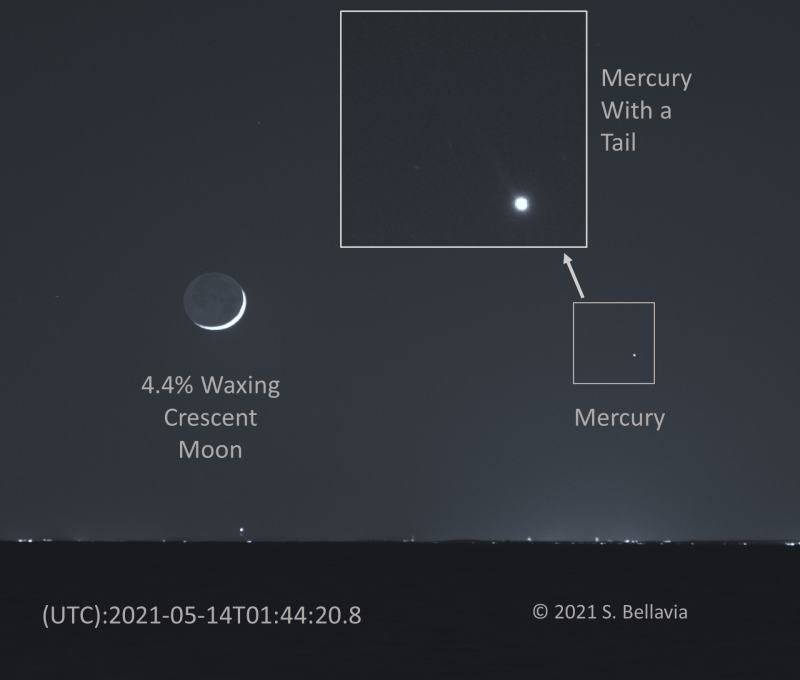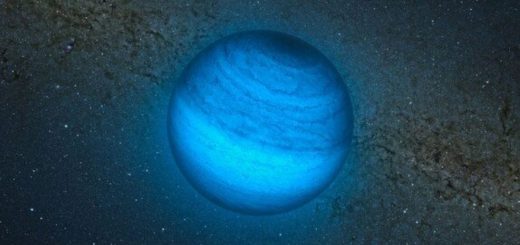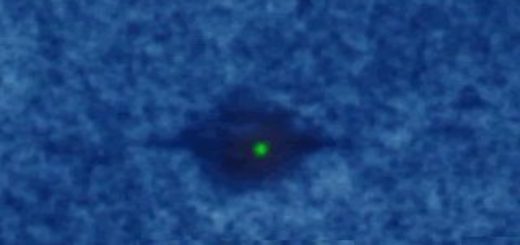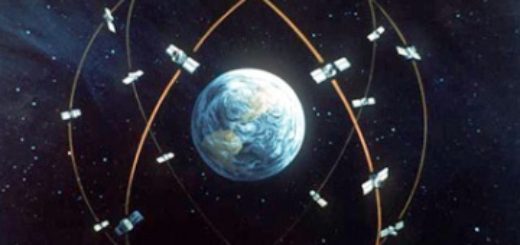How To Capture Mercury’s Sodium Tail

Mercury’s sodium tail on May 13, 2021. It consists of 30 stacked 30-second exposures of Mercury, combined with an image of that night’s crescent moon. Steven wrote: “A 15-million-mile-long (24-million-km-long) plume of gas is ejected from Mercury’s thin atmosphere due to the sun, very much like a comet. This is only visible using a narrowband filter that captures the bright yellow sodium light at 589 nanometers.” Thanks, Steven!
Mercury has a long flowing tail trailing away from the sun, much like a comet, visible in long-exposure photographs. Mercury’s tail was first predicted in the 1980s and discovered in 2001. NASA’s Messenger mission also revealed many tail details between 2011 and 2015 when it was orbiting Mercury. Nowadays, astrophotographers here on Earth are able to capture great shots of Mercury’s tail with the right equipment and a little know-how. See Steven Bellavia’s images above and below, and read more about the technique below.
Why does Mercury have a tail? The answer lies in part in sodium molecules that are freed from Mercury’s surface by the push of sunlight and micrometeorite impacts. The sodium atoms from Mercury are blasted into Mercury’s atmosphere, which can be seen to contain small amounts of sodium, and into space, where they form the planet’s tail. Messenger discovered that sunlight scatters off the sodium atoms, giving them a yellow or orange glow. The sun isn’t just selectively blowing sodium off the surface of Mercury, though. Mercury’s tail is made up of many elements, but sodium gets the top billing because it does such a good job of scattering yellow light, allowing the tail to appear on long-exposure photographs.
How big is Mercury’s tail, really? It’s roughly 100 times longer than the diameter of Earth!
Dot of light with long, fuzzy, pale tail streaming to upper left.
This 2nd image – also via Steven Bellavia, captured on May 14, 2021 – gives a closer look at Mercury’s tail. Bellavia took up the hobbies of astronomy and astrophotography at the age of 10 and has worked professionally on aerospace, physics and astronomy projects for most of his life.
How can astrophotographers capture Mercury’s tail? Mercury’s tail is brightest within 16 days of perihelion, the planet’s closest point to the sun. Mercury reaches perihelion every 88 days (it takes 88 days to orbit the sun once). Mercury was 16 days past perihelion on May 13, 2021, when Steven Bellavia took the first photo on this page of Mercury’s sodium tail.
Bellavia told EarthSky that an article at Spaceweather.com on May 10, 2021, inspired him to try to photograph Mercury’s sodium tail, using a 589 nanometer (nm) wavelength filter that lets the sodium light signature through. After reading about it, he was eager to try it for himself. He explained:
On the morning of Wednesday, May 11, I ordered a 589 nm narrowband filter, with 10 nm of bandpass [the wavelength range of the filter], from Edmund Optics. A friend who owns a 3D printer printed me two rings I designed to hold the filter, as the filter did not come with standard mounting used in astronomy. I used the new setup within hours of getting it all together.
Bellavia captured photos of Mercury’s tail on both May 13 and 14, 2021 – the first and second photos on this page – using a tracking German equatorial mount affixed with a Canon 100mm lens and the filter mounted in front of the lens. On the first night he took 30 exposures of 30 seconds each, while on the second night he took 20 exposures of 60 seconds each using a Borg 90mm refractor. He said:
On the second night, having seen the results from my first attempt, I realized that it would be better to have the telescope and mount track on Mercury itself, as the tail is faint, and all photons collected need to land as frequently as possible on the same pixels in each individual image to reveal it. Also note that on both nights, I would have liked to have taken many more images, but I needed to wait for the background sky to be dark enough to reveal the tail. But Mercury was also setting at this time, either behind land or into clouds near the horizon.
Even with these limitations, Bellavia’s photos of Mercury’s sodium tail are remarkable. Read more about Bellavia’s camera setting here and here at EarthSky Community Photos, and check out his setup and gear for photographing Mercury’s sodium tail at his page on Flickr.
Orangish view of sky with black dot and long white tail. Inset with multicolored closeup of Mercury.
This view of a 7-degree segment of sky through a sodium filter detects the long tail streaming behind Mercury and away from the sun. Image via University of California, Irvine.
Diagram with Mercury and rainbow streaming behind, red closer and concentrated.
When NASA’s Messenger spacecraft flew past Mercury, it saw sodium flowing off the planet due to the solar wind, which shaped it into a tail streaming away from the planet in the opposite direction from the sun, much like a comet’s tail blown by the solar wind points away from the sun. Image via University of California, Irvine.
Astronomers can use filters in the 589 nm range to learn about more objects than just Mercury’s tail. The sun and comets are good targets for sodium filters, and astronomers have also seen sodium streaming from our moon as well as surrounding Jupiter in a haze after being blown off its moon Io. Discovery of sodium in other star systems allows scientists to learn about rocky exoplanets. They can even use sodium absorption bands to measure redshifts and the size of the universe.
Thank you, Steven Bellavia, for your help in assembling this information.
Bottom line: Mercury has a long tail flowing away from the sun. Photographers can capture it using filters for the sodium range of the electromagnetic spectrum. Two sample images here. If you capture one, please submit it to EarthSky Community Photos.



 Creators of mankind
Creators of mankind Description of “Tall white aliens”
Description of “Tall white aliens” Where they came from?
Where they came from? About hostile civilizations
About hostile civilizations The war for the Earth
The war for the Earth “Tall white aliens” about eternal life
“Tall white aliens” about eternal life Video: “Nordic aliens”
Video: “Nordic aliens” Aliens
Aliens Alien encounters
Alien encounters The aliens base
The aliens base UFO
UFO Technology UFO
Technology UFO Underground civilization
Underground civilization Ancient alien artifacts
Ancient alien artifacts Military and UFO
Military and UFO Mysteries and hypotheses
Mysteries and hypotheses Scientific facts
Scientific facts


















